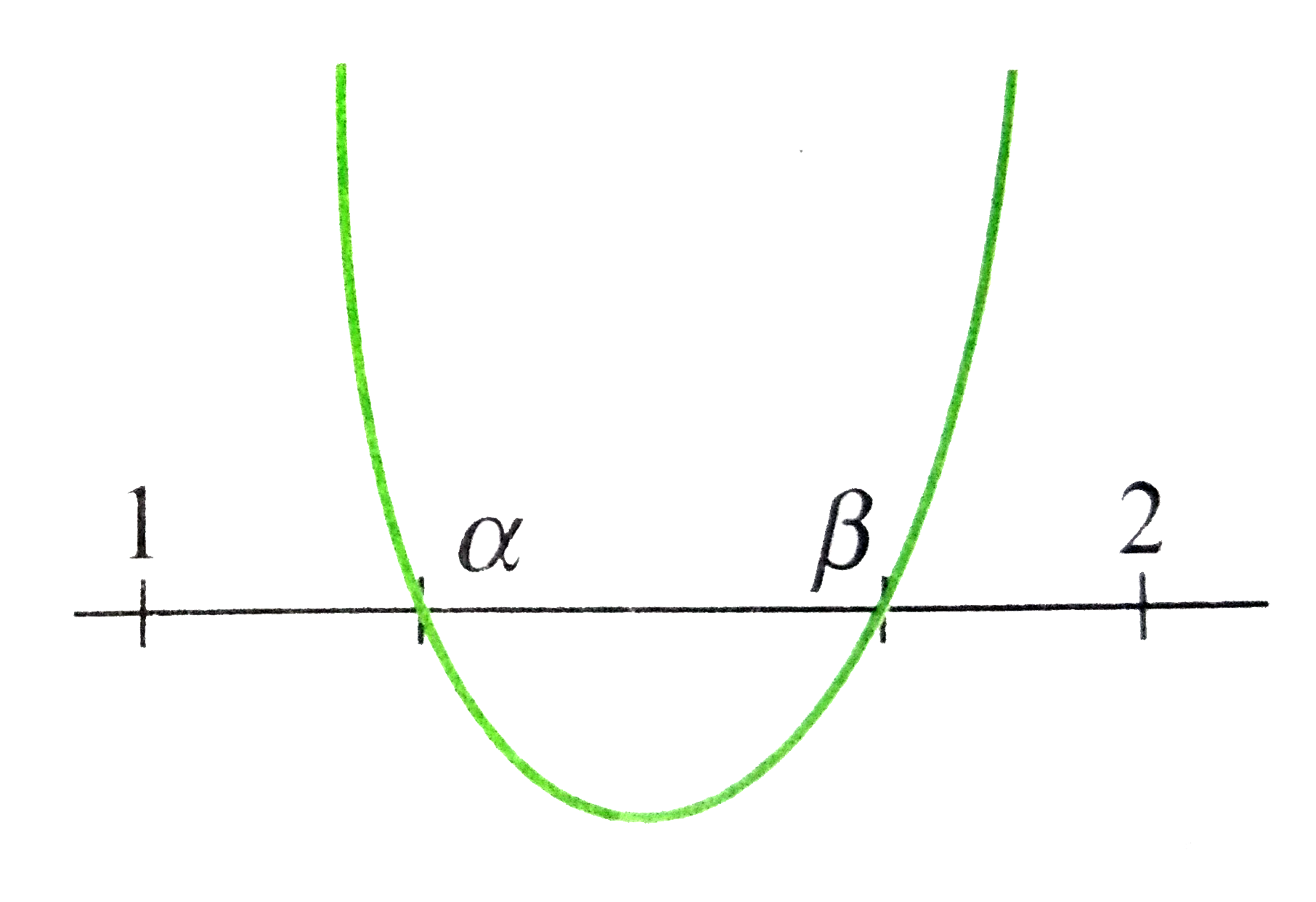Consider the quadrationax2−bx+c=0,a,b,c∈N which has two distinct real roots belonging to the interval (1,2).
The least value of b is
10
11
13
15
The correct Answer is:2
az2−bx+c=0
Let f(x)=ax2−bx+cbe
the correspoding quadratic expression and α,β be the roots of f(x)=0.

Then, f(x)=a(x−α)(x−β)
Now, af(1)>0,af(2)>0,1<b2a<2,b2−4ac>0
⇒a(1−α)(1−β)>0,a(2−α)(2−β)>0,2a<b<4a,b2−4ax>0
⇒a2(1−α)(1−β)(2−α)(2−β)>0
⇒a2(1−α)(1−β)(2−α)(2−β)>0
As f(x) and f(2) both are integers and f(1)>0, and f(2)>0, so
f(1)f(2)>0
⇒f(1)f(2)>1
⇒1≥a2(α−1)(2−α)(β−1)(2−β) (1)
Now, (α−1)+(2−α)2>((α−1)(2−α))1/2
⇒(α−1)(2−α)≤14
Similarly,
(β−1)(2−β)≤14
⇒(α−1)(2−α)(β−1)(2−β)<116
As α≠β, so α2>1 (Using (1))
⇒a>5
⇒b2>20candb>10⇒b≥11
Also, b2>100⇒c>5⇒c≥6
Topper's Solved these Questions
- THEORY OF EQUATIONSBOOK - CENGAGE PUBLICATIONCHAPTER - THEORY OF EQUATIONSEXERCISE - MATRIX MATCH TYPE
6 Videos
- THEORY OF EQUATIONSBOOK - CENGAGE PUBLICATIONCHAPTER - THEORY OF EQUATIONSEXERCISE - NUMERICAL VALUE TYPE
43 Videos
- THEORY OF EQUATIONSBOOK - CENGAGE PUBLICATIONCHAPTER - THEORY OF EQUATIONSEXERCISE - Multiple Correct Answer Type
38 Videos
- STRAIGHT LINESBOOK - CENGAGE PUBLICATIONCHAPTER - STRAIGHT LINESEXERCISE - ARCHIVES (NUMERICAL VALUE TYPE)
1 Videos
- THREE DIMENSIONAL GEOMETRYBOOK - CENGAGE PUBLICATIONCHAPTER - THREE DIMENSIONAL GEOMETRYEXERCISE - All Questions
291 Videos
Similar Questions
Knowledge Check
Consider the quadrationax2−bx+c=0,a,b,c∈N which has two distinct real roots belonging to the interval (1,2).
The least value of c isA4B6C7D5Consider the quadrationax2−bx+c=0,a,b,c∈N which has two distinct real roots belonging to the interval (1,2).
The least value of a isA4B6C7D5If ax2+bx+c=0 have two distinct roots lying int eh interval (0,1),a,b,c εN The least value of b is
A5B6C7D8
If ax2−bx+c=0 have two distinct roots lying in the interval (0,1),a,b,cEψlonN The least value of log5abc is
View SolutionIf ax2−bx+c=0 have two distinct roots lying in the interval (0,1);a,b,∈N, then the least value of a , is
View SolutionIf α and β are the roots of the equation ax2+bx+c=0 then ax2+bx+c=a(x−α)(x−β).Also if a quadratic equation f(x)=0 has both roots between mandn then f(m)andf(n) must have same sign. It is given that all the quadratic equations are of form ax2−bx+c=0 a,b,cεN have two distict real roots between 0and1. The least value of c for which such a quadratic equation exists is (A) 1 (B) 2 (C) 3 (D) 4
View SolutionIf α and β are the roots of the equation ax2+bx+c=0 then ax2+bx+c=a(x−α)(x−β).Also if a quadratic equation f(x)=0 has both roots between mandn then f(m)andf(n) must have same sign. It is given that all the quadratic equations are of form ax2−bx+c=0 a,b,cεN have two distict real roots between 0and1. The least value of c for which such a quadratic equation exists is (A) 1 (B) 2 (C) 3 (D) 4
View SolutionIf ax2−bx+c=0 have two distinct roots lying int eh interval (0,1),a,b,ceπslonN The least value of log5abc is
View Solution
